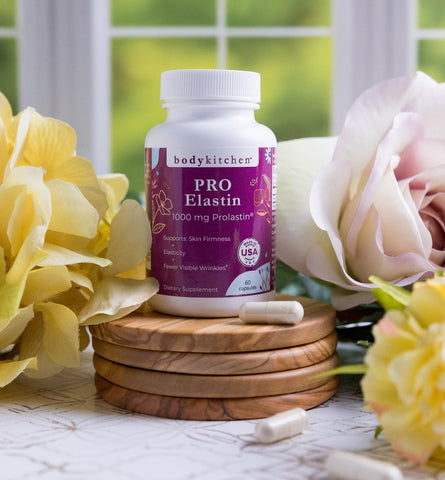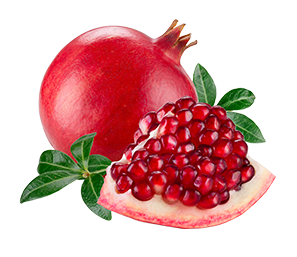What Are Free Radicals and How Do I Combat Them?
What Are Free Radicals?
Free radicals are a type of molecule that’s made during normal cell metabolism (when oxygen is metabolized) and has been linked to numerous age-related conditions, from those as seemingly minor as the appearance of wrinkles to those as serious as cancer, Alzheimer’s disease, and cardiovascular disease. Free radicals are missing one of the electrons in their outer shell, which causes them to be unstable. Due to their instability, free radicals in the body take electrons from other surrounding molecules to become more stable. In doing so, free radicals cause damage to the cells from which the electron has been stolen, and in turn, to the tissues of the body.
Sources of Free Radicals
Human bodies can typically produce their own free radicals under stress and during intense exercise. Most people are also exposed to many sources of free radicals daily. These include cigarette smoke (whether through smoking or secondhand smoke exposure), environmental pollution, UV radiation from the sun (or from tanning beds), alcoholic beverages, some pharmaceutical drugs, pesticides, industrial solvents and other chemicals, ozone, X-rays, and more.
Although it is wise to avoid exposure to these sources of free radicals when possible, such as by refraining from smoking and drinking, or by wearing sunscreen when spending time in the sun, it is virtually impossible to completely avoid free radicals.
What Is the Impact of Free Radicals on the Body?
Explanation of Oxidative Stress
When numerous free radicals “steal” electrons from the previously stable molecules of cells, it creates what is known as oxidative stress, which is believed to contribute significantly to aging and disease.
Symptoms of Oxidative Stress
Oxidative stress begins causing damage at the molecular level, so oxidative stress symptoms may not always be noticeable, especially in the earlier stages. However, signs of oxidative stress may include effects of sun damage, such as wrinkles and spider veins, as well as symptoms of the illnesses to which oxidative stress contributes, such as chest pain and shortness of breath in the case of heart disease.
Contribution to Chronic Diseases
Although research to understand the effects of oxidative stress is still in progress, scientists believe that oxidative stress contributes to numerous diseases, many of which can be debilitating or even deadly. For example, because oxidative stress damages a cells’ DNA at the molecular level, it increases the risk of developing cancer. Oxidative stress is also believed to increase one’s risk of cardiovascular disease, kidney disease, neurological diseases, respiratory diseases, rheumatoid arthritis, among other conditions.
How Do You Protect Against Free Radicals?
Body However, there are ways to reduce the harmful effects of free radicals, most notably by consuming foods that are rich in antioxidants.
How Antioxidants Neutralize Free Radicals
Antioxidants are a category of compounds with the ability to counteract free radicals. Preventing free radicals from “stealing” other molecules’ electrons, antioxidants “donate” their own electrons and effectively neutralize the damage that free radicals would otherwise cause.
Examples of Key Antioxidants
Since “antioxidant” is somewhat of a catch-all term that describes a property of numerous compounds, many compounds may act as antioxidants. For instance, the body produces its own antioxidants in the form of alpha lipoic acid and glutathione, among others. Antioxidants may also come from the vitamins and minerals found in food, including vitamin E, vitamin C, copper, zinc, and selenium. Numerous plant chemicals known as phytochemicals may also act as antioxidants, including carotenoids (which are found in tomatoes and kale) and flavonoids (which are abundant in cocoa, blueberries, and green tea).
Supplements to Combat Free Radicals
NAC
N-acetyl cysteine (NAC) is a form of the amino acid cysteine that can be taken in supplement form. Cysteine is also found in most high-protein foods, such as meat, grains, soybeans, dairy products, and beans.
Glutathione
Because the body requires a combination of the amino acids NAC, glutamine, and glycine to produce the antioxidant glutathione, NAC supplementation may help increase the body’s levels of glutathione.
Glutathione is a powerful antioxidant that may also improve immune system function and reduce damage to liver cells in cases of nonalcoholic fatty liver disease.
Quercetin
Quercetin is another potent antioxidant that is found in a large number of vegetables and fruits in the form of a plant pigment. Common sources of quercetin include onions and berries, but for those who struggle to consume enough quercetin through dietary sources, supplements with quercetin may be a useful and effective option.
Best NAC and Quercetin Supplement
There are many supplements that contain some quantity of NAC and/or quercetin, which can make it difficult to decide which product to choose. An NAC and quercetin supplement that incorporates compounds shown to maximize bioavailability and absorption is thought to be the most effective option on the market.
Body Kitchen’s Mega NAC + Quercetin
Body Kitchen’s Mega NAC + Quercetin Supplement is a perfect example of an NAC and quercetin supplement that includes an additional compound to increase absorption: 30 mg of a patented form of black pepper extract that has been shown to improve bioavailability by at least thirty percent in rigorous clinical trials. This means that the antioxidant ingredients (600 mg of NAC and 600 mg of quercetin per dose, which are the doses that clinical studies have shown to be effective) can more effectively neutralize free radicals in the body. In doing so, the supplements may lower overall oxidative stress, which is believed to reduce one’s chances of developing a host of chronic and degenerative diseases.
In addition to these antioxidant effects, supplementing with Mega NAC + Quercetin can frequently provide several other health benefits. The combination of ingredients may help to optimize the function of the respiratory system, lower levels of inflammation in the body, promote cardiovascular health, support the liver’s ability to detoxify, improve the health of the skin, and regulate the immune system. In particular, NAC is thought to have useful expectorant properties during periods of stress on the lungs.
Talk to a Medical Professional Before Incorporating an NAC and Quercetin Supplement
Although NAC and quercetin may have numerous health benefits, they may also cause side effects. In the case of NAC, the most common being upset stomach, nausea, diarrhea, fatigue, eye irritation, itching, skin swelling, and wheezing. NAC can also cause more serious side effects such as low blood pressure, increased asthma symptoms, and anaphylaxis. Also notable is the fact that NAC can interact with some medications, including some immunosuppressants and medications for chest pain.
Meanwhile, quercetin supplements may cause side effects such as headaches and upset stomach. In addition, high doses of quercetin can lead to kidney damage, and it is commonly recommended to take breaks from quercetin supplementation periodically. Be aware that quercetin also has the potential to interact with prescription drugs, including some antibiotics, anticoagulants, chemotherapy drugs, corticosteroids, cyclosporine, and medications that are changed by the liver, among others.
Thus, it is essential to consult a qualified medical professional before incorporating NAC and quercetin into your daily supplement routine. Because these medical professionals are familiar with your medical history, your doctor can most likely advise on whether either supplement would pose any particular risks based on your current medications and supplements, as well as any health conditions or risk factors that you may have.















